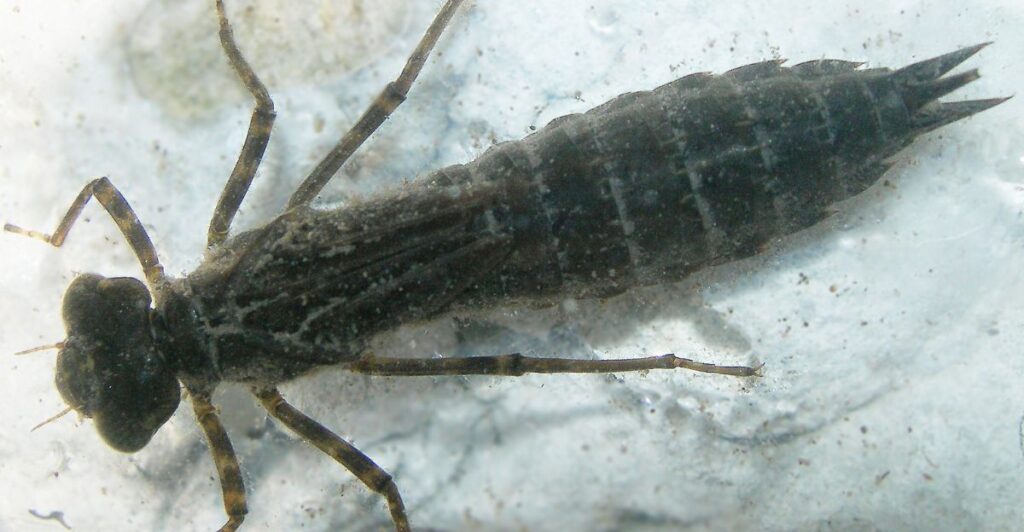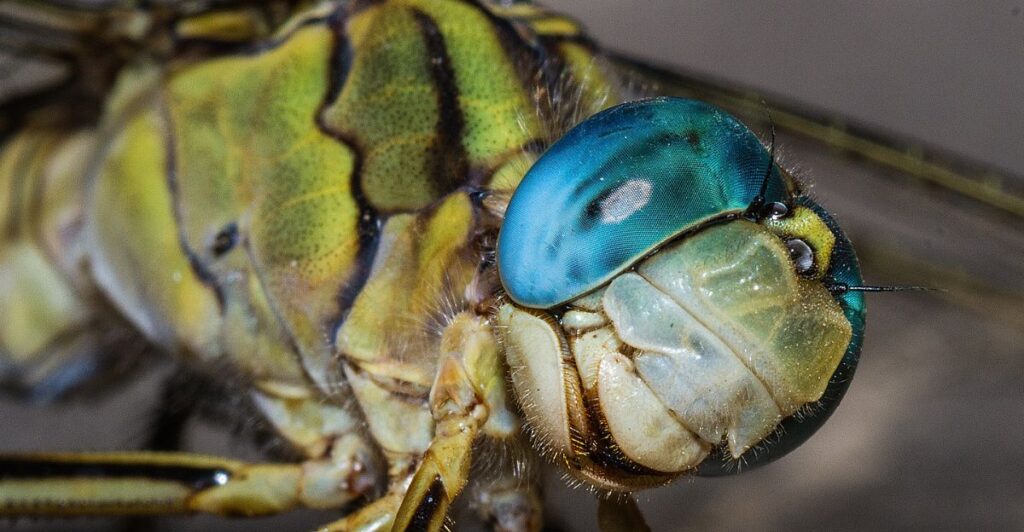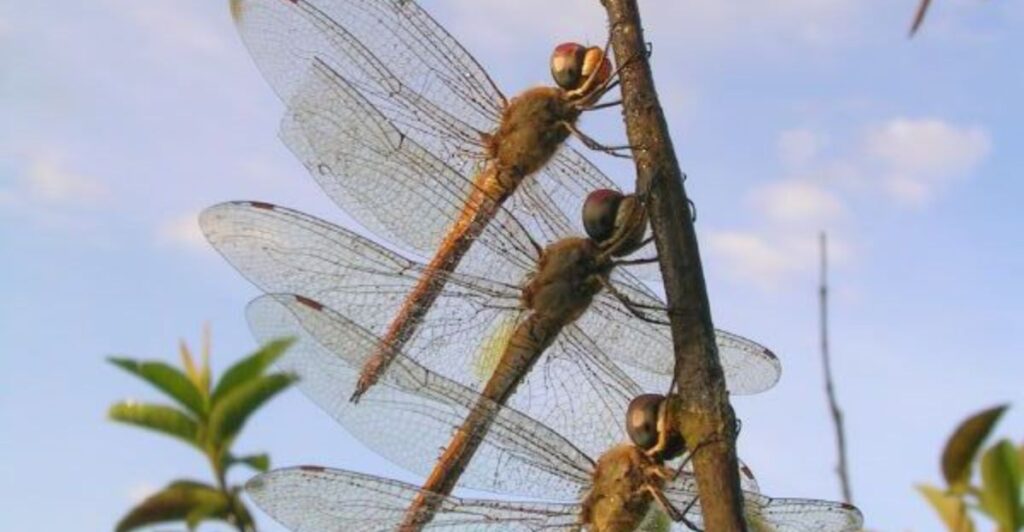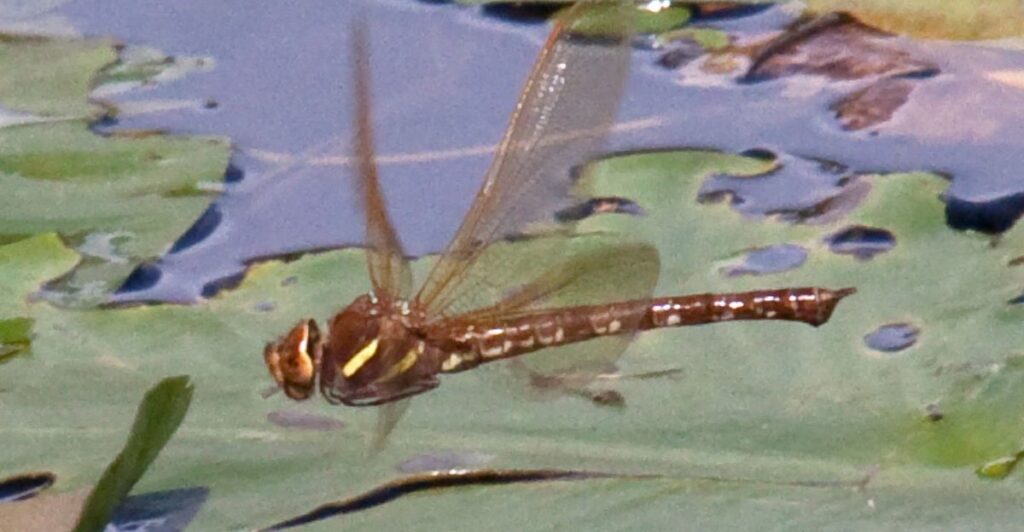
Dragonflies are often admired for their graceful flight and vibrant colors, but there’s much more to them than meets the eye. These remarkable insects have abilities and behaviors that continue to surprise scientists and nature enthusiasts alike. Here are twelve intriguing facts about dragonflies.
1. Born as Underwater Assassins

Dragonflies don’t begin life as sky acrobats. Their story starts underwater as fearsome nymphs, where survival depends on ambush tactics. These nymphs, or larvae, are armed with extendable jaws that shoot out to snatch unsuspecting prey like mosquito larvae, tadpoles, and even small fish.
2. Eyes That Never Miss a Thing

Ever wonder why dragonflies have such enormous eyes? These compound eyes cover most of their head, offering nearly 360-degree vision. With up to 30,000 lenses per eye, they detect movements that are invisible to most of the predators and prey.
3. Nature’s Pest Controllers

Dragonflies eat hundreds of mosquitoes daily, acting as natural pest control. Unlike chemical insecticides, they balance insect populations without harming biodiversity. Hence, encouraging their presence promotes a healthier environment and keeps mosquito bites at bay.
4. Migrators Across Oceans

The globe skimmer dragonfly (Pantala flavescens) holds the title for the longest insect migration, traveling over 11,000 miles annually. These tiny aviators use monsoon winds to cross oceans between India and Africa. Their migration even rivals that of monarch butterflies.
5. Tiny Guardians of Ecosystems

Dragonflies thrive in clean water, so seeing them around a pond or stream suggests the area is free of pollutants. Scientists track their populations to understand the effects of pollution and climate change, further underscoring their importance in preserving delicate ecosystems.
6. A Thermal Balancing Act

Dragonflies regulate body temperature using their wings. On cold mornings, they bask in the sunlight with their wings spread wide, absorbing heat to power their activity. Conversely, during hot days, they use their wings to shade their bodies. This adaptability helps them thrive in varied climates.
7. Fearless Defenders of Territory

Male dragonflies are highly territorial, staking claim to ponds or streams as their breeding grounds. When rival males challenge them, they engage in fast, aerial battles. These duels aren’t just about showing dominance; they help secure the best spots for egg-laying, ensuring their offspring thrive.
8. Nature’s Architects of Resilience

The dragonfly’s exoskeleton combines strength and lightness as it enables durability during flight and combat. It protects them during fights and enables their high-speed maneuvers. Engineers draw inspiration from their design for lightweight materials used in aviation and robotics.
9. High-Altitude Flyers

In the Himalayan region, dragonflies have been recorded flying at altitudes of up to 18,000 feet. Their high-altitude flights are tied to seasonal migrations or searching for breeding grounds. By catching upward air currents, they conserve energy, allowing them to travel farther and higher.
10. UV Light Glow

Some dragonflies have a hidden trick up their wings—literally. Certain species, like the Erythemis simplicicollis, fluoresce under ultraviolet light. It is a unique glow that isn’t visible to the human eye but is believed to play an important role in communication or mate attraction.
11. Predictive Predators

Dragonflies plan their moves like expert strategists. When they spot a target, they calculate its flight path and intercept it mid-air with stunning accuracy. Using their near-360-degree vision, they lock onto prey and adjust their flight speed and direction in milliseconds.
12. Bacteria-Resistant Wings

Covered in nanoscale structures called nanopillars, their wings prevent bacteria from sticking and multiplying. These tiny spikes tear bacteria apart. Scientists are also studying this phenomenon to develop antibacterial materials for medical equipment, like surgical tools and hospital surfaces.
Stay connected with us for more stories like this! Follow us to get the latest updates or hit the Follow button at the top of this article, and let us know what you think by leaving your feedback below. We’d love to hear from you!







